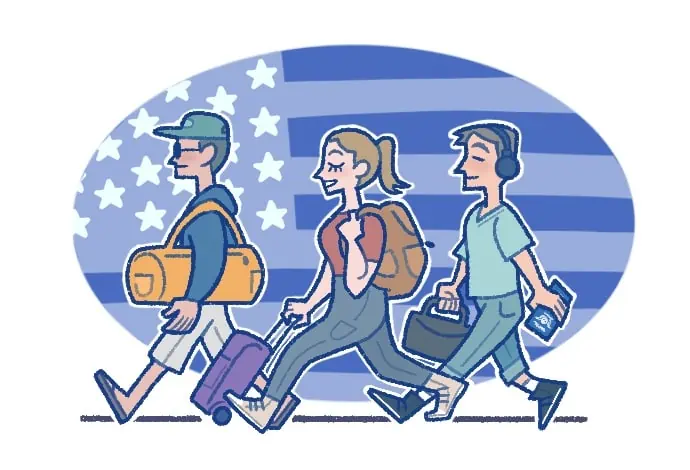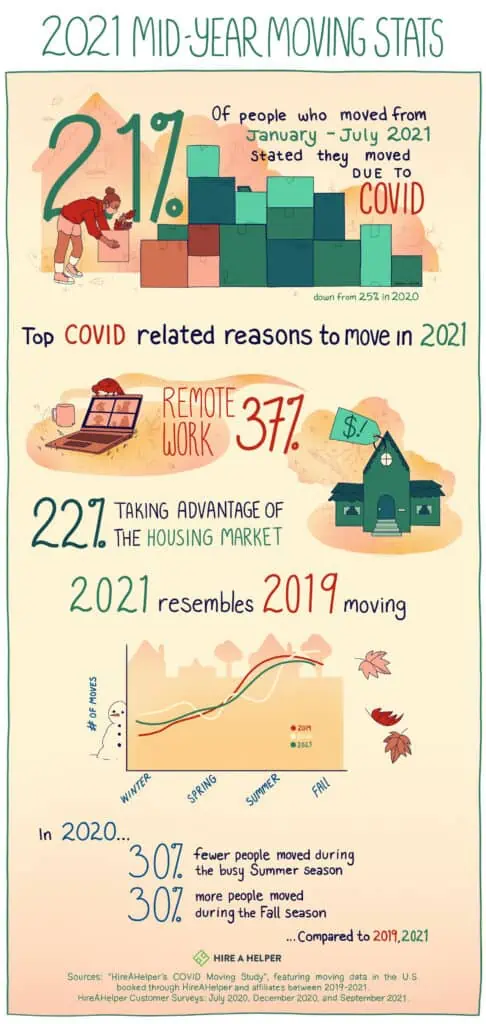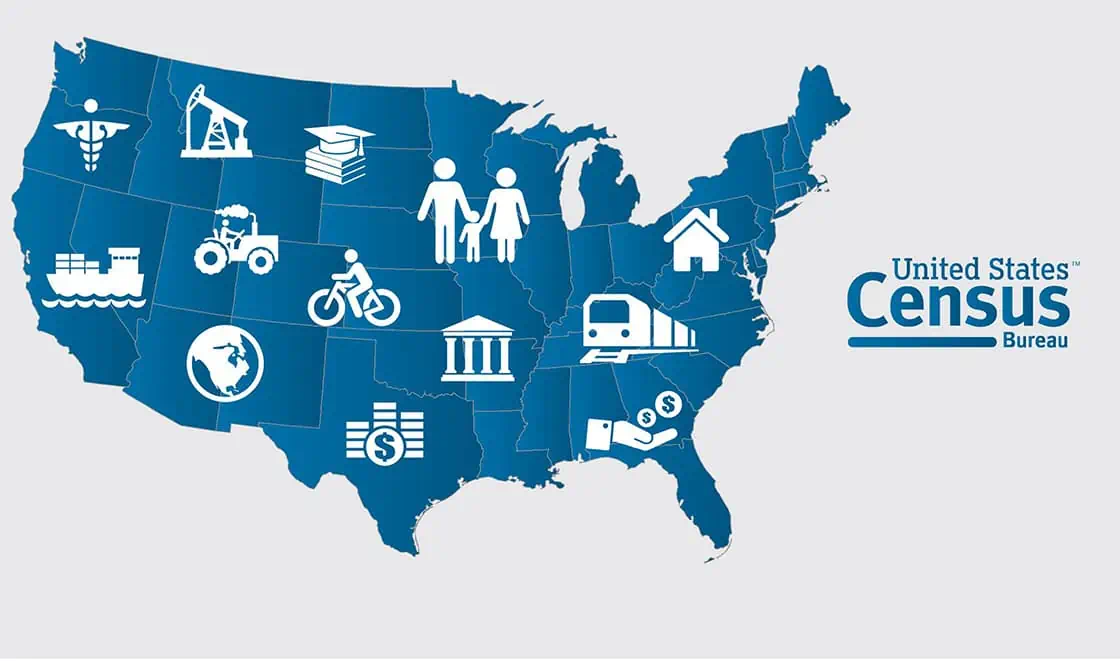Key Findings
- The number of U.S. citizens moving to Mexico in 2022 is set to reach 18,161 — the highest in nearly a decade
- More than half (52%) of Americans who moved to Mexico in 2022 were retirees
- Jalisco and Mexico City attract nearly a third (31%) of all U.S. citizens moving to Mexico
- Rent is two times lower than in the United States, on average
- There was an avg. of 1,870 monthly Google searches for “moving to Mexico” in 2022 — a 42% YoY increase
- North Carolina (+75%), Texas (+65%), and Florida (+60%) saw the greatest YoY increases in Google searches for “moving to Mexico”
The number of Americans moving to Mexico over recent years is estimated to be between 800,000 and 1.5 million. And lately, that number has been growing rapidly.
Americans leave the country for any number of reasons: relaxed COVID restrictions, affordable housing, affordable healthcare and social care, greater conditions for remote work, warm climate, amazing food, rich and varied culture, and the list goes on. Mexico has all of these things, and it’s right next door.
But what is the cost to the country? The influx of immigrants with higher incomes is reportedly having adverse effects on the local population; there are reports of gentrification in Mexico City, rents doubling in Tijuana, and foreign demand driving up prices in Quintana Roo and Baja California Sur — all places that are among the top destinations for Americans settling into Mexico.
Let’s dive into the numbers and see just how many Americans have moved to Mexico in 2022.
Going South: Migration to Mexico To Reach New Heights in 2022
As reported in our recent study of Americans moving abroad, 10,594 U.S. citizens have taken residence in Mexico so far in 2022.
Not only is that 22% higher than by the same time last year, but at this rate, it’s estimated 18,161 Americans will have moved to Mexico by the end of 2022. That figure is higher than in any year since 2013.
When looking at this trend in more detail, the number of temporary residents (as opposed to permanent residents) has increased sharply. Temporary residents are defined as people who intend to stay in Mexico for longer than 180 days for the stated purposes of either work, study, reunification with family or business ventures.
“… it’s estimated 18,161 Americans will have moved to Mexico by the end of 2022. That figure is higher than in any year since 2013.”
Already in 2021, over 9,000 U.S. citizens have successfully applied for a temporary residency in Mexico; that’s the highest number of applications over the last decade!
By the end of this year, Mexico is on track to receive 10,780 Americans as new temporary residents.
Jalisco — Not Mexico City — Is the Top Destination for American Immigrants
There is certainly a lot of buzz about Americans moving to Mexico City, but it is the state of Jalisco that consistently sees more U.S. citizens moving in than Mexico’s capital… or any other state for that matter.
Over 2,000 Americans have moved to Jalisco in 2022, and that figure is likely to reach 3,400 people by year’s end. That would mean nearly one in five (19%) Americans moving to Mexico choose to move to Jalisco, a West Coast city.
The nation’s capital, Mexico City, isn’t too far behind Jalisco. Mexico City has seen 1,315 American move-ins so far in 2022, with 2,254 projected by year’s end (~12% of the total migration). Baja California Sur also ranks high, with an estimated 1,867 new residents from the United States, (~10% of the total inflow).
Best known for being home to Cancun, this state is beginning to attract Americans looking to live (and not just party) there. In 2022, Quintana Roo is projected to attract nearly 13% of all moves from the United States — that’s second only to Jalisco.
Taken together, these four states receive the majority (54%) of all Americans moving to Mexico.
Moving far away?
Do it cheaper.
MovingPlace can save up to 40% compared to traditional interstate moving companies. Click here to learn how.
Remote Work? More Like Retirement! Most Common Reasons for American Immigration to Mexico
Since 2012, almost a third (31%) of all Americans who moved to Mexico as temporary or permanent residents reportedly did so for work. That’s based on the official immigration statistics which group all new residents into categories of “work”, “family reunification”, “retirement”, and “other”.
An additional 23% of immigrants from the United States get their resident permits in Mexico by being a family member of either a Mexican national or another U.S. citizen who already has a valid residence permit.
The most popular category of permits issued to Americans is called “rentista” – which is the most common route to residency for retirees.
In the last decade, 40% of all U.S. citizens who took up residency in Mexico were retirees; this year, that share has jumped to 52%. In other words, over half of all Americans moving to Mexico are reportedly doing so during their retirement. This might suggest U.S. cost of living is having an impact on social security stability as well.
Tourists or Residents?
And what about that segment of American remote workers whose moves to Mexico have been subject to much discussion and debate?
As the number of U.S. citizens moving to Mexico is setting new records, in some parts of Mexico, calls for Americans to go back home are beginning to be heard.
While Mexico does offer a Temporary Resident Visa for remote workers under the Financial Solvency clause, official statistics don’t distinguish these types of residents from other temporary resident holders. It is likely that they are bundled into the “Other” category, which also covers people relocating for scientific research, government work and more.
Iit’s reasonable to assume remote workers who are giving Mexico a go are likely making use of Mexico’s easy-to-obtain tourist visas, which allow immigrants to stay in the country for up to six months.
Summer Spike: Searches for Moving to Mexico Peaked in June 2022
The data show no sign of American immigration slowing down anytime soon. On top of the growing number of recorded moves, moving intent (signified by Google searches for “moving to Mexico”) is the highest it’s been in years.
“…there wasn’t a single state that didn’t increase their Googling of Mexico.”
From 2019 to 2021, the number of monthly Google searches for “moving to Mexico” tended to stay between 1,500 and 2,000.
By the middle of 2022, however, these searches reached 3,100. Though it’s not simple to know the causation, that spike correlates with the U.S. Supreme Court’s overturn of the precedent-setting Roe v. Wade decision, as well as 9.1% currency inflation in America — its highest rate in 40 years.
Where in America ‘Moving to Mexico’ Searches Peaked
The average number of monthly Google searches in America for “moving to Mexico” rose roughly 36% year-over-year, reaching 2,100 searches in 2022 — that’s up an average of 1,550 searches.
Overall, there wasn’t a single state that didn’t increase their Googling of Mexico; all states saw greater search volume for “moving to Mexico” this year as compared to 2021.
Some states, however, stand out. In North Carolina, there was a 75% increase in Google searches for “moving to Mexico”. Searches also jumped 65% in Texas and 60% in Florida, respectively.
By contrast, California, where the number of “moving to Mexico” searches is the highest in the country, only saw a Google search increase of 15% in 2022, as compared to last year.
Moving far away?
See prices for container labor – instantly.
Read honest customer reviews.
Book everything online.
All About Affordability: Why Mexico Attracts Expats From Around the World
Mexico is finding itself to be a magnet not only for Americans, but for expats across the globe.
In its Expat Insider 2022 report, Inter Nations — an expat community hub — named Mexico the number one country for expats. Among the aspects that propelled it to the top spot are “affordability” and “ease of settling in”, which both listed Mexico as the very best in the world.
“It’s reasonable to assume remote workers who are giving Mexico a go are likely making use of Mexico’s easy-to-obtain tourist visas, which allow immigrants to stay in the country for up to six months.”
Affordability of housing and medical care are also likely to attract Americans; both are increasingly unaffordable for vast strands of the U.S. population.
Healthcare
A survey commissioned by ExpatsInMexico – an online magazine for foreigners living in Mexico – found that for 75% of expats, $150 per month covers all of their healthcare needs. It’s an attractive proposition for retirees, who make up 80% of the survey respondents and are likely to spend twice that amount, at minimum, if they remained in the United States.
Rent
Rent is another big immigration factor. When in the United States, the average rent is now over $2,000, and growing in over 90% of U.S. cities, the average rent in the four states of Mexico that are top destinations for U.S. immigrants is below $800.
Of the four top destination states, rent is lowest in Jalisco ($720 per month) and Quintana Roo ($735). Rent is slightly higher in Mexico City ($787), and noticeably higher in Baja California Sur ($925). (All figures are expressed in average dollar amount after conversion.)
Sure enough, the houses and apartments Americans moving to are likely to be at the higher end of the price spectrum. But if you consider that most Americans moving to Mexico are retirees, rents this low must be extremely appealing, even if they sold their homes to make the move.
Sources and Methodology
Official immigration statistics come from the Unidad de Política Migratoria – Boletines Estadísticos and were used to estimate the number of Americans moving to Mexico. Only moves requiring either a temporary or a permanent work permit were counted. Military moves were excluded, as were the moves for temporary purposes, such as business and tourism.
The total and average monthly search volumes for the keyword “moving to Mexico” were taken from Google Ads API.
Rent prices for Mexican cities were sourced from Propiedades.com, while the estimates of average rents in the U.S. were taken from Redfin.







 Of course, much of the impact of the pandemic was related to the virus itself, and the safety concerns it introduced. Among those surveyed who moved due to COVID in 2020, 13% reported being spurred on by feeling unsafe in their current locations due to the spread of COVID.
Of course, much of the impact of the pandemic was related to the virus itself, and the safety concerns it introduced. Among those surveyed who moved due to COVID in 2020, 13% reported being spurred on by feeling unsafe in their current locations due to the spread of COVID. 





